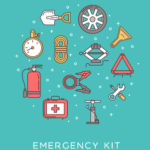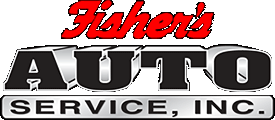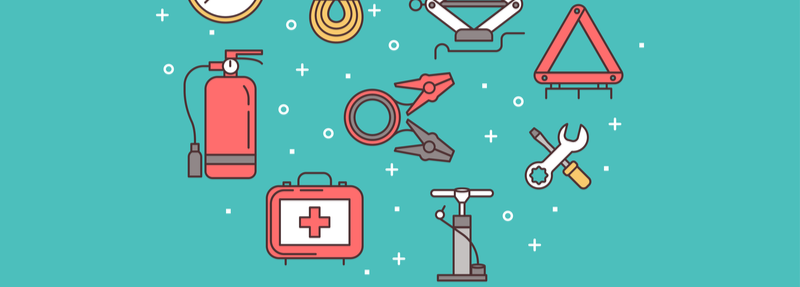 Now that the holidays are over, it seems like winter will last forever. If you have not yet had a chance to pack an emergency kit for your car, don’t delay any longer. We have plenty of winter weather left, so schedule that winter car care and auto maintenance you may have been putting off. Be prepared for more rain in our future and inspect those tires and wipers to stay safe.
Now that the holidays are over, it seems like winter will last forever. If you have not yet had a chance to pack an emergency kit for your car, don’t delay any longer. We have plenty of winter weather left, so schedule that winter car care and auto maintenance you may have been putting off. Be prepared for more rain in our future and inspect those tires and wipers to stay safe.
Prepare For Winter Driving
Inclement weather can be miserable to drive in. Wind, rain, and fog can make visibility difficult. Give yourself every advantage possible for winter driving. Plan your route before you leave, and be sure to check for road closures and storm warnings. Tell a friend or family member where you are going, how you plan on getting there, and check in with them along the way. Stay current with all the routine auto maintenance for your vehicle. Pack and stow an emergency kit, a first aid kit, and a tire-changing kit.
Emergency Kit
You can purchase a basic emergency kit online or at many brick & mortar stores. Of course, you can always put one together on your own. The Washington State Department of Transportation has put together a great checklist to get you started. Be sure to include items specific to your personal needs and customized for your vehicle. Consumer Reports, AAA, and Wirecutter have all put together comprehensive lists of emergency kit items you may want to check out.
Winter Car Care & Auto Maintenance
The condition of your vehicle and its various components is vitally important to your safety while on the road. Wet weather can affect the way your car reacts to road conditions. If you plan on a road trip this winter, schedule an auto maintenance service with your local auto shop. Of course, you can do the inspections yourself if you choose to. Here’s a handy, downloadable winter car care checklist to help get you started. Thoroughly inspect the following components and replace worn or damaged items.
Tires
Generally speaking, tires have a useful life span of about 6-10 years. After 3-4 years, inspect your tires for wear, cracks, bulges, and other flaws at least twice a month. As the age of your tires increases, the rubber continues to degrade, even if you don’t rack up a lot of miles. Regular tire maintenance should also include maintaining proper air pressure, tire rotation, and tire balancing.
In addition, the tire tread should have at least 4/32” to remove water from the road effectively. Less tread means less successful water removal, which increases the chance of hydroplaning, skidding, and spin-outs. Once the tread reaches 2/32”, your tires are required by law to be replaced.
Windshield Wipers & Fluid
Experts recommend replacing windshield wipers or wiper blades at least twice a year. In places that see a lot of rain, you can expect to replace them more often. Once the blades start to chatter or streak, they have reached the end of their life. Additionally, if you notice that the wiper blades are cracking, splitting, or warping, then you should replace them. Regular windshield wiper maintenance can help prolong their usefulness.
Every time you fill up your gas tank, use the gas station’s cleaning equipment to wash the windshield and wiper blades free of dirt, road grime, dead bugs, tree sap, and bird droppings. Clean glass requires less work from the wipers to clear water, sleet, and snow from the windshield. Keep the windshield washer fluid tank topped off as well.
Oil Change
Cold weather can thicken oil, requiring your engine to work harder. Clean oil and a new oil filter can also help improve overall engine performance and improve gas mileage on long trips. If you are approaching your maintenance marker for an oil change, go ahead and do it before your winter road trip.
Headlamps & Fog Lights
Lousy weather, overcast skies, and fewer daylight hours hinder visibility during the winter months. Keep your headlights clean and replace blown fuses or bulbs as necessary. Driving with the correct lights for the conditions can help you see road hazards before they become collisions.
Low Beams
Motorists may use low beams in low light and foggy conditions. Heavy rain and light snow also benefit from the use of low beams.
Fog Lights
Those yellow-toned lights found near the bottom of your front bumper are usually called Fog Lights or Fog Lamps. Use them in conjunction with low beams. They work best in fog, mist, heavy rain, and dusty conditions.
High Beams
Situations of dense darkness, with little to no external light sources, can use high beams – be sure to turn them off when there are oncoming vehicles. Don’t use high beams in foggy weather since the intense light can bounce off the fog, hindering your vision.
Heater & Defroster
Chilly wet weather may require you to run the defroster the entire time you are in your car to prevent moisture build-up inside. If it’s been a while since your HVAC system has had a maintenance service, it may be a good idea to get it checked out.
Car Battery
During the winter, your car battery must work harder to perform the tasks required of it. Turning over the engine in temperatures that hover near freezing can often kill an older car battery. To avoid getting stranded far from home, have your technician test your car battery to gauge how much life it has left.
Winter Car Care in Kirkland, WA
Fisher’s Auto Service provides a quality alternative to quick-tune tire shops and dealership service departments. We offer you the additional convenience, integrity, and personal attention of a locally owned business in Kirkland, Washington. In addition to our high-quality service, we use advanced technology and offer a wide variety of auto parts from brands you trust. We look forward to helping you with all your winter car care needs.
Make An Appointment
Make an appointment by calling us at (425) 823-4441 or visiting us online.

